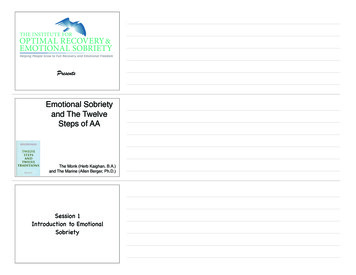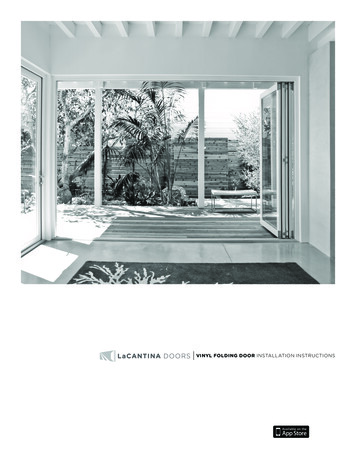
Transcription
Seven-Step Planto Organize the Home and OfficeSTEP ONE: Identify the kind of feel you want in your space.You may want to collect ideas from magazines, Pinterest, or other people’s homes and offices. This is agreat chance to get on the same page with other family members in deciding what, exactly, you aregoing for. Minimal? Clean? Sleek? Bright? Colorful? Use this page for your brainstorm:
STEP TWO: Decide what you will write on your Current Projects List.First, using the space below, you will want to brainstorm ALL the areas of the home and office thatneed to be organized (filing cabinet, linen closet, pantry, under the bed, downstairs bathroom, etc.).Then you’ll want to select your focus for THIS MONTH and put that on your Current Projects List.You may want to write, “Organize the Home and Office,” but that will most likely take more than amonth (which is fine ). For the Current Projects List, it might be easier to choose only the areas youcan reasonably organize this month. Such as, “Organize the desk in the office” and “Organize thekitchen cupboards.”
STEP THREE: Calendar which areas will be organized on which days.Considering the projects you just identified for your Current Projects List, go ahead and block outtime on your monthly calendar when you will be able to focus on the selected areas. This doesn’tneed to be the “only” time you work on organizing, but it will give you a nice feeling to know youhave dedicated time in which to work.When, generally, is the best time for you to organize? Early in the morning? Right after dinner?Sunday afternoon? (Brainstorm here and then get it on the calendar!)STEP FOUR: Follow these three rules Divide the room into several smaller sections, and then work clock-wise.In our kitchen, I do the fridge, pantry, bookshelves, and then each cupboard separately. Take everything out of one section at a time, and then put back onlythe best items. Ask, “Does this bless my home?” And “Is this where I go to find this item?”Marie Kondo suggests you ask, “Does this spark joy?” Anything that doesn’t positively answer the questions above goes to the trash,into a basket labeled, “Somewhere Else,” or to charity. The “Somewhere Else” itemswill go to the rooms where they do belong, and the charitable donations can be put into a bigin the garage and scheduled for pick-up.
STEP FIVE: Track all the things that still need to be done.Using the space below (or a digital note), record all the things that you discover as you’re organizing.Perhaps you need to buy new batteries, get a computer fixed, repaint a bedroom, fix a hole in asweater, etc.STEP SIX: Put the list from above into your Inbox to process during your Weekly Review.You could alternately make a note on your calendar when your Weekly Review is scheduled toremind you to process this list you collected. The tasks you wrote down will end up on yourNext Actions List, your Someday List, etc.
STEP SEVEN: Identify routines that will help keep each roomand space simplified and organized.This is a list you’ll want to share with your family at a special family meeting. You may want towrite the room/space on the left, and a few things that will help keep it in order on the right. Thesewill eventually become habits for you and your family members. If others are having trouble remembering the routines, you may want to temporarily post the routines for each specific area. Enjoy!
Marie Kondo suggests you ask, "Does this spark joy?" Anything that doesn't positively answer the questions above goes to the trash, into a basket labeled, "Somewhere Else," or to charity. The "Somewhere Else" items will go to the rooms where they do belong, and the charitable donations can be put into a big











